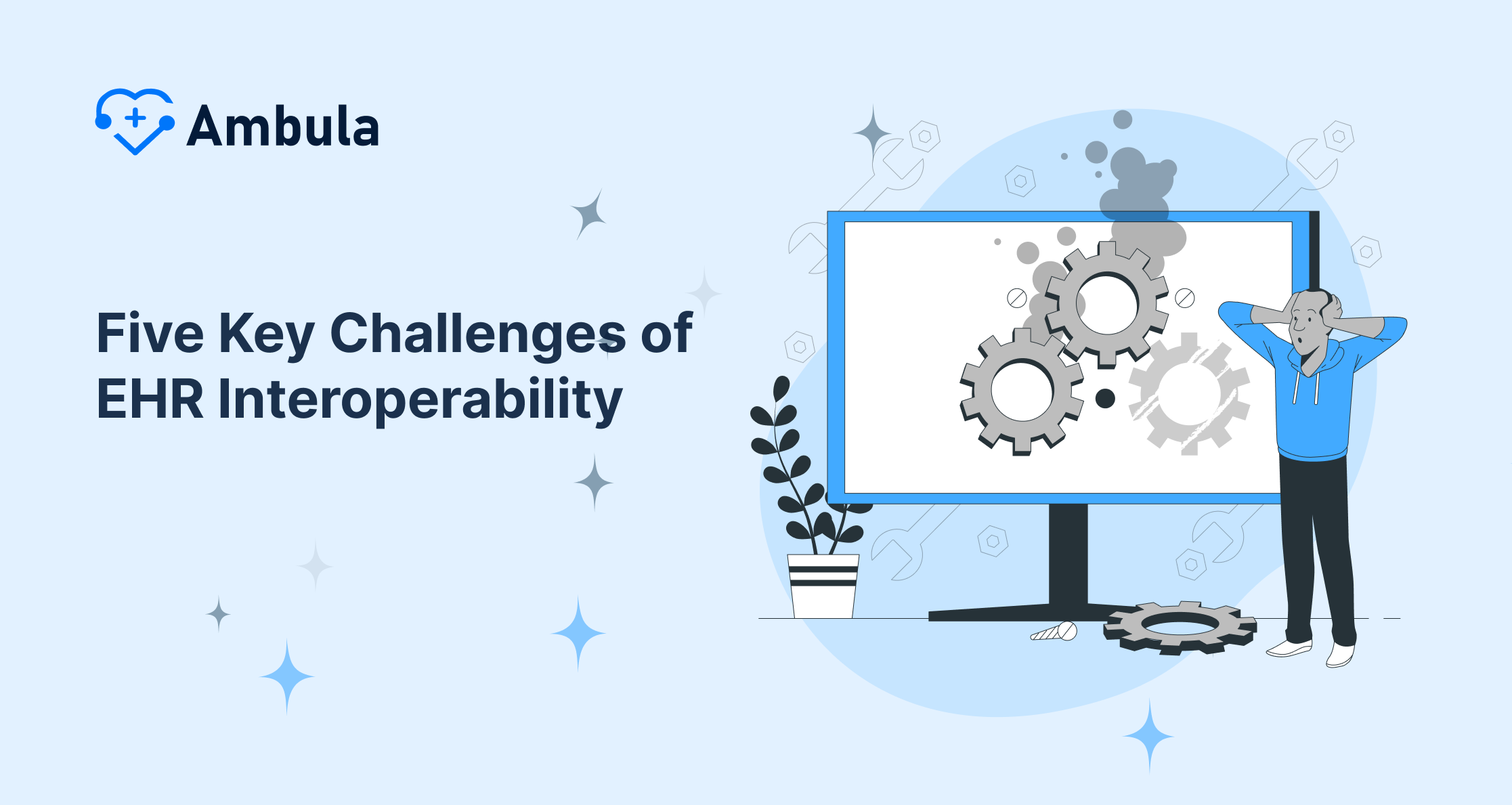
In the modern healthcare landscape, Electronic Health Records (EHR) are instrumental in providing comprehensive patient care. With the advancement of technology, a crucial component has taken center stage – interoperability. This foundational element allows disparate EHR systems to communicate, share, and use information efficiently.
What is EHR Interoperability?
Interoperability refers to the ability of different systems to exchange and interpret information seamlessly, enabling healthcare providers to access and share patient data across different organizations and platforms.
Interoperability is more than a technological upgrade; it’s a route to coordinated care, improved outcomes, and a more efficient healthcare system. Yet, the path to seamless interoperability is fraught with challenges. Let’s delve into these hurdles that impede the exchange of vital health data.
In the upcoming section, we’ll delve into five key challenges of EHR interoperability that healthcare providers must navigate.
Varied Data Standards and Formats
EHR systems come in diverse shapes and sizes, each with its language for data representation. Standards such as Health Level Seven (HL7) have evolved to facilitate conversation among systems, and more recently, the Fast Healthcare Interoperability Resources (FHIR) standard shows promise for the future. However, standardizing data across the industry remains a herculean effort. The lack of uniformity leads to misinterpretations, data redundancy, and potential risks to patient safety. When information cannot flow smoothly between systems, healthcare professionals face barriers to accessing potentially lifesaving data.
Lack of Comprehensive Interoperability Policies
Regulatory frameworks like the Health Information Technology for Economic and Clinical Health (HITECH) Act and the Health Insurance Portability and Accountability Act (HIPAA) set the stage for data sharing and privacy. Nevertheless, gaps in regulation create unpredictable ground for healthcare entities to share information confidently. Policies must be adaptive, detailed, and globally encompassing, promoting interoperability while safeguarding sensitive patient information. The absence of such cohesive policies stunts innovation and prevents the establishment of a truly interoperable network.
Technical and Infrastructure Limitations
The challenges of EHR interoperability are not merely legislative; technical and infrastructure limitations must also be addressed. The healthcare industry often grapples with outdated systems incapable of supporting the complex data exchange requirements. Obsolete hardware, proprietary software architectures, and the high cost of system upgrades hinder the progress toward interoperability. Moreover, when healthcare providers operate on diverse platforms, establishing common ground for data sharing becomes exceptionally difficult. Developing a robust, scalable infrastructure is a prerequisite for achieving interoperability, albeit one with a price tag that many organizations find daunting.
Concerns Over Privacy and Security
Patient data is both incredibly valuable and sensitive. As such, any interoperability solution must prioritize privacy and security to maintain patient trust. In the quest for interoperability, there is a risk of exposure to security vulnerabilities and data breaches. Health Information Exchanges (HIEs) play a critical role in managing the sharing of health information, yet they too, must navigate an evolving landscape of cybersecurity threats. As healthcare moves towards a more connected future, industry leaders must strengthen security measures, implement comprehensive risk management strategies, and ensure compliance with regulations to protect personal health information from unauthorized access.
Resistance to Change and Lack of Training
Change is often resisted, and the healthcare industry is no exception. Shifting from long-standing practices to new, interoperability-focused procedures necessitates considerable cultural adaptation within healthcare organizations. The efficacy of new EHR systems is contingent upon the users’ acceptance and proficiency, making training and support pivotal elements of a successful transition. The key to overcoming this hurdle lies in effective change management strategies emphasizing the tangible benefits of EHR interoperability – both for care providers and patients.
Conclusion and Way Forward
EHR interoperability embodies the potential for healthcare innovation, delivering high-quality, coordinated patient care. By addressing the varied data standards, the need for comprehensive interoperability policies, technological advancements, privacy and security concerns, and resistance to change, we can pave the way for an interconnected healthcare system.
That EHR interoperability presents, it is clear that a collaborative, multi-faceted approach will be required. Health information technology vendors, healthcare organizations, policymakers, and clinicians must work together to achieve a seamless, secure, and efficient system that supports the continuity of care and contributes to better patient outcomes.
Stakeholders should draw on successful initiatives as case studies and sources of inspiration. For instance, organizations that have successfully integrated FHIR standards can provide a blueprint for others. Investing in education and ongoing support for clinicians will also be essential to fostering a culture ready to embrace these changes.
While the journey towards EHR interoperability is complex, it is a necessary evolution in healthcare that promises to enhance not only the quality of patient care but also the efficiency and satisfaction of healthcare providers. It is time to boldly confront these challenges with innovation, determination, and a shared vision for a future where the free flow of health information is a natural component of patient care. After all, interoperability is not just about connecting systems; it’s about connecting people to better health and wellness.





